When the act of reading is not trivial
Prologue
[A reader has opened the digital Proceedings of an online conference. There is a parenthesis on the screen, articulating something that took place at the time of the conference:]
Scene 1
[A lecture performance at an online conference is about to start. It takes place in a conference call. There is some text on the screen. Everyone is looking at it. The readers/audience have their microphones on or off. After a while the presenter scrolls down.]
[The presenter is reading aloud the text in black:]
so, time to begin…
…with an introduction. Ready?
[the presenter waits for someone to reply]
Ok. Here are some trains of thought, some rather small remarks related to the title, that is, to the act of reading, or its event, and the triviality and non-triviality involved, that is, how a writing expects or instructs us to read.
Background:
My experience as an artist comes from the field of
participatory performance
which I define as
performances, in which the role of the audience is

”Unconventional? What do you mean by that?”, someone might ask. Let me elaborate a bit:
– strictly speaking, all performance is participatory:
– the audience is always a part of the fabric of a performance
– this could be even said to define performance, in comparison to some other art forms, which by default exist also without – and are not significantly altered by – an audience.
> A performance is always altered by the audience, and like all performers know, the same work will be different each time it is performed.
However,
– when audience participation is conventional, these conventions render the act of participation invisible
> Then the part of the audience is not considered a part, that is participation, but something outside of performance itself.
The word ”participatory” is then used to denote the kind of performance, in which
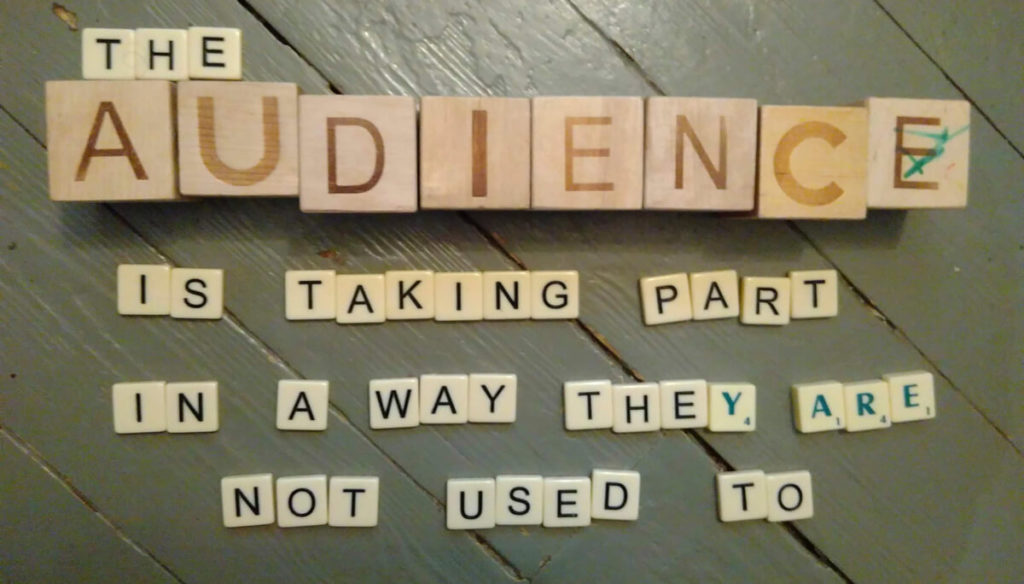
Scene 2
[The audience members of the presentation read the red words from the screen. They cannot proceed before the presenter scrolls on. To pass time they re-read the lines as if they were listening to someone repeating them aloud.]
On my summer vacation 2021 I read some random fiction, like
Love Story by Erich Segal
If Beale Street Could Talk by James Baldwin
Nälkävuosi (The Hunger Year) by Aki Ollikainen
The Susan Effect by Peter Høeg
Kenraaliharjoitus (the General Rehearsal) by Anna-Leena Härkönen
Bolla by Pajtim Statovci
—and some non-fiction: Pölyn ylistys (A Praise of Dust) by Silvia Hosseini
[The presenter continues, with a warm, yet casual tone. The
listeners adjust their position. They have legs, arms, fingers, soles of feet against something, some air around their bodies, clothing touching the skin, their face feels a tingling sensation.]
These books did not control me as explicitly as performances tend to do. When I had the book, I could read it where I wanted, when I wanted. I could also read the parts I wanted, in the pace and order I wanted.
[The audience members agree to listen, agree to this proposal that the voice of the presenter is heard. Or that’s how it seems.]
The implicit control or guidance was instead very strong. All the books assumed that I know how to read them and that I do not have any interest in negotiating about it. My pages were numbered. It seemed as if my role as the reader was clear to everyone. There was no hint of
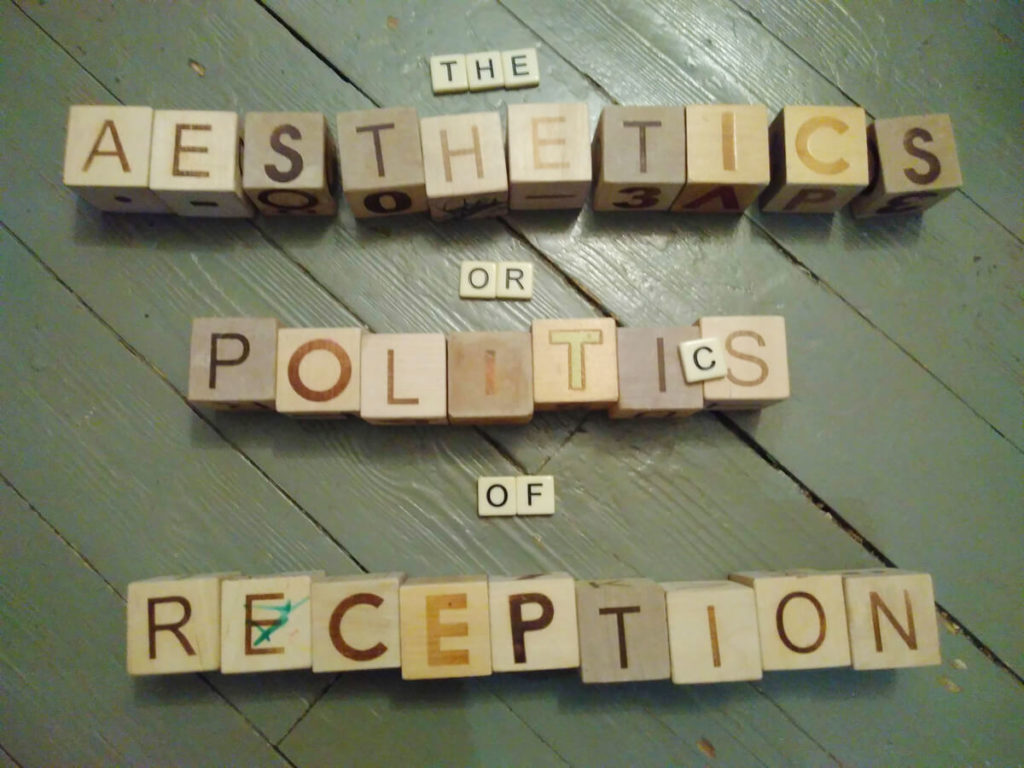
being a question in any way.
Scene 3
[The air around the participants, in all of their locations, is the same. It continues across the landscape in between, caressing them. Caressing them as an entity. An entity sharing an experiential field. Caressing it. ]
But of course, I’m simplifying things. And there is also experimental literature. Oulipo, Fluxus, multiple genres of electronic literature. A Norwegian researcher, Espen J. Aarseth, introduces the concept
ergodic literature.
With it, he refers to literature, which requires non-trivial effort from the reader to traverse the text. On the field of performance, this would be called participatory.

requires non-trivial effort from the audience and its members to situate themselves in the temporal/spatial/social/other dimensions of the work.
Scene 4
[The participants of the presentation adjust their position again. Their collective body is intimate with the screen/s in front of it. Maybe the devices are even parts of that body, its members. They sensitize for a moment to feel this intimacy with and through and inside the gigantic technological apparatus. The electricity, the light, the warmth, the connection.]
During my artistic doctoral project I started a research practice of ”readings”. In the first examined artistic part, entitled ”A Reading of Audience”, I wrote:

In the back of my mind I had the word ”theatre”, in Finnish ”teatteri”, the etymology of which, in the Greek language, refers to the place of viewing, that is the auditorium, and thus to the act event of receiving art. I also pondered the Finnish words ”kirja”, ”kirjallisuus” and ”kirjoittaa”, translated as ”a book”, ”literature” and ”to write”.
Thus the word for literature originates from the act of making it, while the word for theatre originates from the act event of receiving it. I wanted a word, a genre, which would shift the focus of my text from writing it to reading it. Thus ”a reading”, in Finnish ”luenta”.
[the presenter touches his hair]
This also fit my research interests well. I wanted to research the phenomenon of audience in performances. To do this, I wanted to avoid making something on stage, since I felt it would then take my focus. Meanwhile, I still wanted to engage in artistic research, and not
merely consult my own experiences of audiencing or interview other
audience members. I wanted to make live art/performance/theatre and yet defer from performing or ”staging” something.
[clearing the throat]
So what to do?
I chose a third option: if, in order to conduct my research,
I can’t put something on stage, and I can’t just stay in the receptive position of the audience either, maybe I can slip something in between?
Something thin, like a lens,
through which the stage is still visible,
in which the audience itself is partly reflected and
on which I can write.
[pause]
So I did. I started a series of ”audience drafts”. These drafts were events of reading, in which I invited an audience into a shared space-time and handed to them some writing on paper, writings which would guide them to contemplate their situation, the phenomenon of audiencing, in which they were taking part at the moment. Through gathering people as an audience and through the aesthetics I used, like [parenthesis], I superimposed theatre and reading.
Sometimes this textual lens would be a program leaflet, sometimes a letter, sometimes a booklet, sometimes a script, sometimes a spatial installation of chapters. Sometimes there would be just one text, a copy of which everyone would have. Sometimes there would be several, out of which each audience member would have to choose. Sometimes I would find out who were the actual attendants and address them individually and personally in the text, quoting their own words or refering to their history. Some would take place in events of artistic research. Some in art festivals. Some in pedagogical situations. Some in reading circles. Some in theatres, some in studios, some in pavillions, some in classrooms. Some of them would be in English, most of them both in Finnish and English and one also in Arabic. Sometimes I would invite people to a performance made by someone else and surround this event with my textual lens.
In total there have been about 17 seperate events, depending on the method of counting, and within those events over a hundred different versions of the lens, or ”drafts”.
Scene 5
[The presenter closes his eyes. Opens them. Looks over the screen and into the street behind it. A bunny is hopping into the view from his right-hand side. It crosses the street calmly and disappears from the view. The audience members of the presentation check the time. Time exists as numbers on a screen. Time exists as the gap, as the act of waiting, as the empty space between words, between events, containing the actual meaning.
The audience closes their eyes, opening them again when
the voice returns.]
So what was the point? What did I learn. What do all these events of reading tell about reading-as-a-nontrivial-act and its relation to performance and participation?
Most of the time, like right now, I feel too full, too busy and too active to say anything clear, concise, accurate, revelatory or wise about it.
Writing disturbes by reading.
Production disturbes my reception.
Performing disturbes my audiencing.
Creativity disturbes my passivity.
Future disturbes my present.
Tension disturbes my ability to contemplate the tension.
I am left thinking [the presenter is thinking]:
– the act of reading is generally trivial, and the vast majority of books and publications expect me to already know how to read them or do not question their own format
– reception of art is always an event, a unique and momentary happening, even if the art work it self would be permanent and stable
– in performative arts eventness is enhanced, even though also in a vast majority of them the act event of receiving is also trivial.
also participation enhances eventness, since it draws attention to the act event of receiving, with the expense of the object of reception
– does participatory art (= art works, the reception of which requires nontrivial effort from the audience) then always lean towards performative arts?
= is that kind of art, in which the way of reception is unconventional, always also (at least to some extent) a performance event?
is ergodic/
participatory/
non-trivial-effort-requiring/
non-conventional-audience-role-proposing writing also (a)
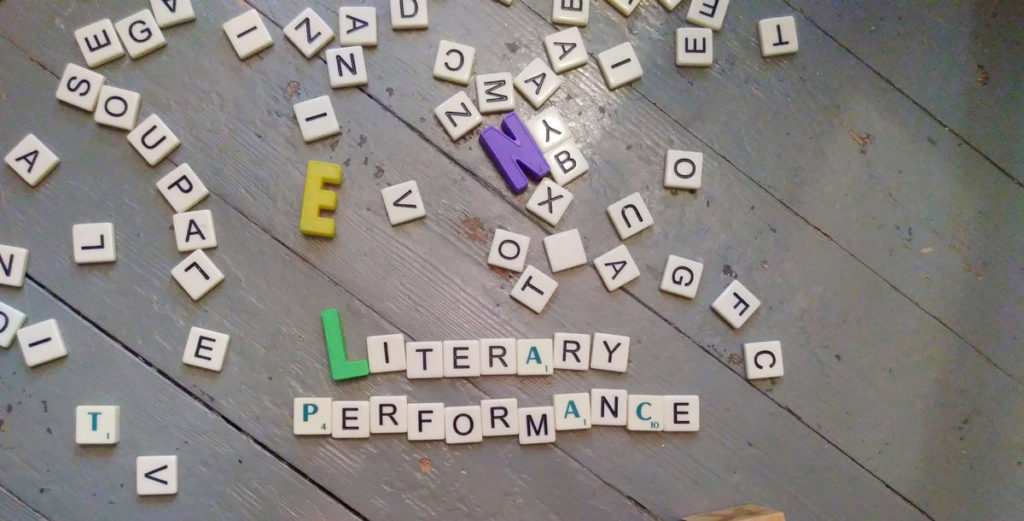
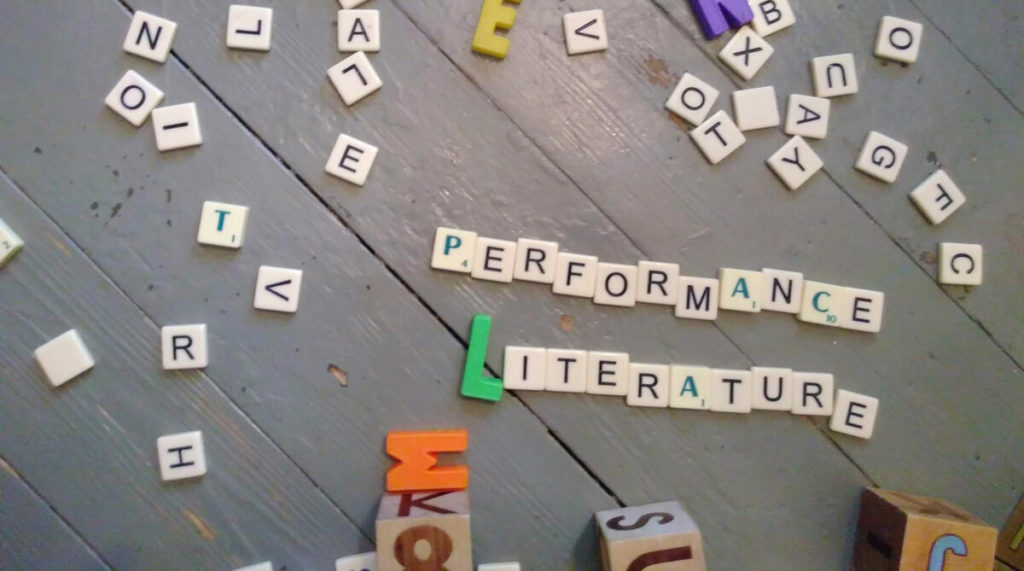
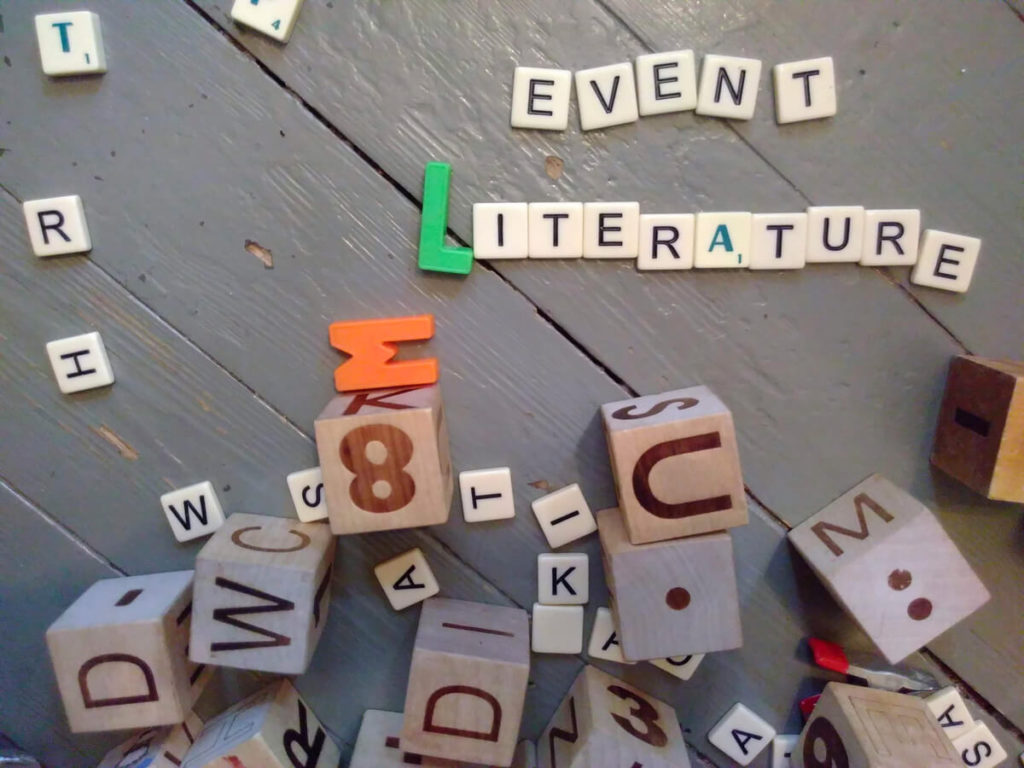
[?]
Contributor
Tuomas Laitinen
My background is in participatory and experiential forms of theatre and performance art, with a focus on the position of the audience, including the ensuing conflicts and creative possibilities. The body of my work contains various performative formats, for example a retreat, week-long mystery plays, fighting circles and children’s theatre. I have worked as a director, performer, writer, teacher and curator. Currently I am working on an artistic doctorate “Audience as a Condition”.